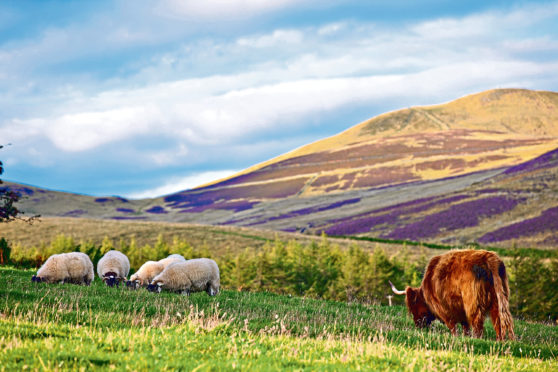In my last column I was moaning about the fact there was still no indication of whether a trade deal with Europe would be struck, and asking what the plan was in the absence of such an agreement.
As you know a last-minute “stitch-up” was agreed to, with the UK Government finally realising a bad deal is better than no deal.
It is a relief that the UK did not crash out of the EU with no deal at all – as nearly happened – but what we have four and a half years after the referendum is a last-minute stitch-up that scraped through at the 11th hour.
Is this the right footing for the future relationship with our most important partner?
As the deal was delivered so late the impact on agriculture has not been fully assessed, but we have concerns about a myriad of hidden concessions that will take time to come out of the woodwork.
It is clear that the deal has missed crucial areas of trade and will cause a massive amount of new “red tape” – ironic, as lessening bureaucracy was one of the promises given by the Leave campaign.
The increased paperwork for buyers and hauliers adds cost and the producer will bear the brunt, which could make hill lamb totally uneconomic.
We are also worried about supplies of inputs such as pharmaceuticals and vegetable seed suppliers are already warning of shortages, which will affect croft vegetable production.
The Scottish Government says it will now do everything it can to mitigate the damage that will be caused by the deal.
We wait to see what this means with regards to support for rural development, agriculture and trade of agricultural produce.
Having left the EU completely – and with it the Common Agricultural Policy (Cap) – a new agricultural system for Scotland will need to be designed, and quickly.
We are in a period of abeyance at the moment. The UK Government has promised to keep paying agricultural support at the same level as the Cap until the end of this government.
However, there are reports the UK Government is reneging on this pledge.
There will be more on this in future columns, no doubt.
But that aside, doing nothing, even in the name of “stability”, is not an option when we are faced with the climate change emergency.
The Scottish Government has set up climate change groups in arable, beef, dairy and hill, upland and crofting to develop proposals on how to cut emissions and tackle climate change.
It is likely new support mechanisms will be linked in some way to measures to mitigate climate change, so this is important. We have to come up with proposals that produce food from hill ground, retain population in remote areas and improve the environment for wildlife, carbon capture and to attract tourists.
Crofting will have a key role in achieving these objectives and already does.
Meanwhile, Covid-19 is rearing its ugly head again as expected as we went into winter, though actually worse than predicted.
I am sure that with the wisdom of hindsight, the governments are wishing they had not encouraged a Christmas relaxation of the vigil, but there you go.
Crofting was less badly hit by the pandemic than many other areas last year and we may do better this time as well if we are all careful and stay at home as much as possible.
The poultry sector has had its own lockdown and isolation since December 14.
All birds should be housed or otherwise kept separate from wild birds to prevent the spread of avian flu.
I wish you all a very happy and healthy 2021.
- Patrick Krause is chief executive of the Scottish Crofting Federation.
